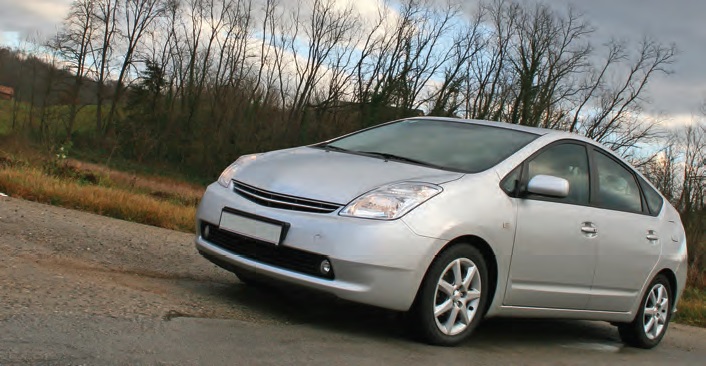Regenerative braking and wear
R. David Whitby | TLT Worldwide May 2020
Efficiency and effectiveness are key factors to using energy more wisely.

Regenerative braking systems help to lower consumption in hybrid vehicles and reduce their carbon footprint.
© Can Stock Photo
Regenerative braking is an energy recovery mechanism that slows down a moving vehicle or mechanism by converting its kinetic energy into a form that can be either used immediately or stored until needed. In a battery or hybrid vehicle, the electric motor uses the momentum to recover energy that would otherwise be lost to the brake discs as heat.
When an electric motor is run in one direction, it converts electrical energy into mechanical energy that can be used to perform work. When it is run in the opposite direction, a properly designed motor becomes an electric generator, converting mechanical energy into electrical energy. This electrical energy can then be fed into a charging system for the vehicle’s batteries.
The first Toyota Prius was sold over 20 years ago and used a kinetic energy recovery system (KERS), the first of which had been developed for racing cars. Many electric and hybrid vehicles now use regenerative braking, as it has become well-known as a method of increasing their range. Regenerative braking systems are not able to fully emulate the traditional braking action for drivers, although improvements are continually being made. The electronic control systems used to determine when energy will be regenerated, and when friction braking is used to slow down the vehicle, affects what the driver feels.
However, regenerative braking is not guaranteed to improve the range of an electric or hybrid vehicle. It doesn’t necessarily make them more efficient—it just makes them less inefficient. The most efficient way to drive any vehicle would be to accelerate to a constant speed and then never use the brakes. Braking removes energy which must then be input again to get back up to speed, so the best efficiency is achieved by never slowing down, which is both impractical and potentially dangerous.
The evaluation of regenerative braking involves both efficiency and effectiveness, which are different. Efficiency refers to how well regenerative braking captures lost energy from braking. Effectiveness refers to how large of an impact regenerative braking really makes.
No machine can be 100% efficient (without breaking the laws of physics) because any transfer of energy inevitably incurs some loss as heat, light, noise, etc. The efficiency of a regenerative braking system can vary, depending on type of vehicle, motor, batteries and controller, but is typically between 60% and 70%. Regeneration usually loses between 10% and 20% of the energy being recovered and then the vehicle loses another 10% to 20% when converting that energy back into acceleration.
The effectiveness of regenerative braking is a measure of how much it can increase the vehicle’s range. This depends on a number of variables, including driving conditions, terrain and vehicle size. Driving conditions have a large impact. Regenerative braking is significantly more effective in stop/go city traffic than in long distance driving. Repeated slowing down and accelerating will recover a lot more energy than simply driving for hours without touching the brake pedal. Terrain is also important. Uphill driving doesn’t require much braking, but downhill driving will regenerate a much larger amount of energy due to the long braking periods.
On long downhill driving, regenerative braking can be used nearly constantly to regulate speed while continuously charging the battery. Vehicle size may be the largest factor in the effectiveness of regenerative braking. Heavier vehicles have much more momentum and kinetic energy. A big flywheel is more effective than a small flywheel, so systems are more effective for larger, heavier vehicles. Regenerative braking will never be as effective in smaller vehicles as it is in larger ones, simply due to physics. But the benefits of regenerative braking, apart from simple energy recovery, shouldn’t be ignored.
However, the regenerative braking system is only one part of a vehicle’s driveline, which include automatic transmissions, constant velocity joints, wheel bearings and sometimes hypoid rear axles. Studies have shown that the wear of brakes and tires is reduced with regenerative braking, but I can find no evidence in the general literature as to whether it affects the wear of the other driveline components, either positively or negatively. If anyone knows of such evidence, I would be very pleased to receive it.
David Whitby is chief executive of Pathmaster Marketing Ltd. in Surrey, England. You can reach him at pathmaster.marketing@yahoo.co.uk.